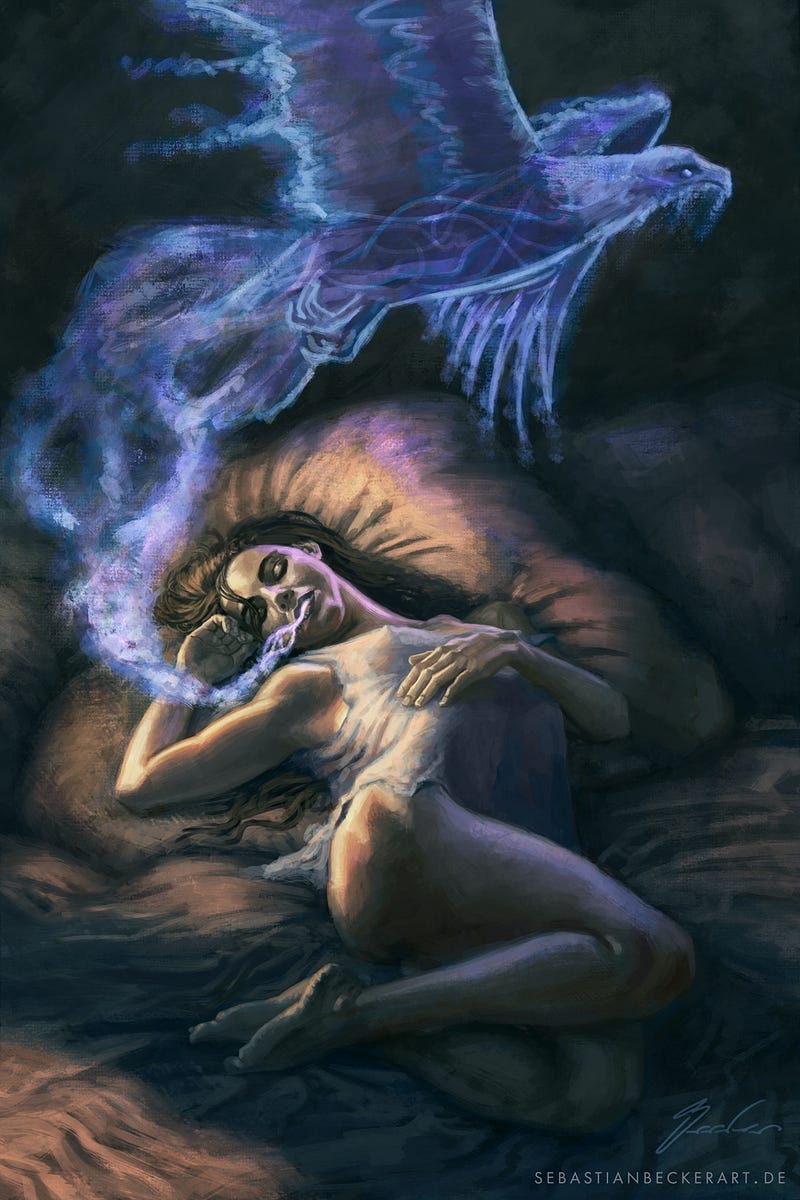
“One of the marvels of the world: The sight of a soul sitting in prison with the key in its hand.” — Rumi
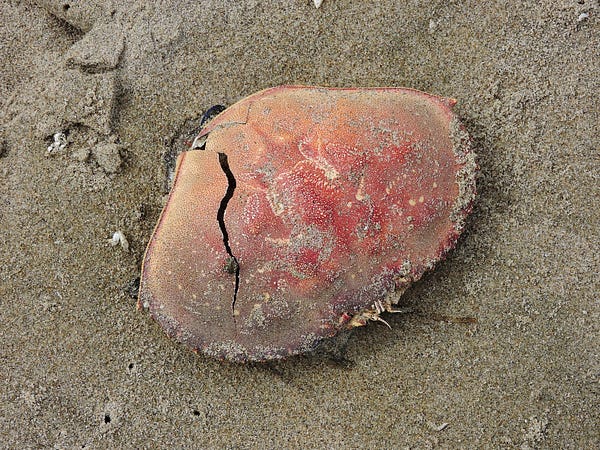
Have you ever seen a crab shell on the beach and assumed it to be the remnants of a dead crab? What we assume to be the loss of life is, in fact, the continuation of life.
Invertebrates are animals that neither possess nor develop a backbone or spine. An arthropod is an invertebrate with an exoskeleton, which just means an external skeleton. Arthropods include spiders, insects and crustaceans like crabs and lobsters. The exoskeleton of these animals is inelastic, so the animal can outgrow the exoskeleton, it eventually outgrows the shell.
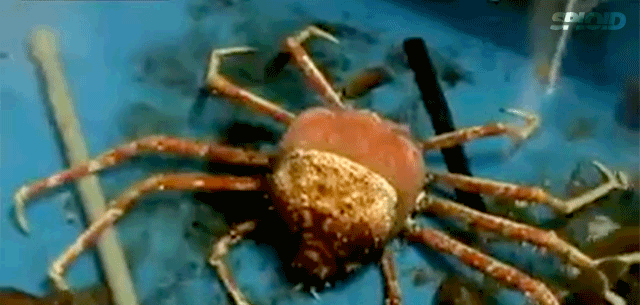
In a process known as Ecdysis, the shell is shed and a new larger shell is formed. At specific times of the year, or at specific points in its life cycle the animal routinely casts off a part of its body in order to evolve.
This Thursday Thought centres on how we can learn from the wisdom of nature and let go of previous versions of ourselves as individuals and as organisations. When we routinely shed parts of ourselves that no longer serve us and develop new versions of ourselves we keep pace with the natural rate of change of all things.
Cru”S”tacean Curves
A crab moult is an exact copy of the crab at the moment in time that the crab regenerates. In order to grow, the crab discards the old shell and reveals a new soft shell. It takes about a week for the new shell to harden. As you can imagine this is a very vulnerable time for the crab, the crab must hide away to avoid predators. After the shell hardens, the crab then spends the next year growing to fill the shell.
I share this beautiful act of nature because it is a reminder of how we must lead our businesses and our lives. Hold the idea of the crab moulting in your mind as we map the process on to an S curve.
For regular followers of The Thursday Thought, you will be familiar with the concept of the S curve. S curves are a great way to both describe and map the performance of a company, technology or a product over a period of time. S curves follow the shape of the letter S with slow growth at the bottom of the S, rapid growth comes next, followed by a dominant position in the market and stagnation at the top of the S.
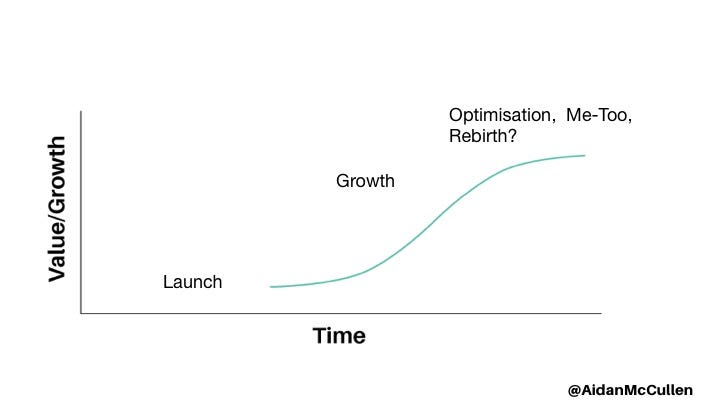
When a business or product is established, it eventually plateaus and experiences stagnation, process optimisation, automation, job cuts, me-too propositions and decay.
To Innovate Companies and Leaders need to dedicate time to jumping from one S curve to another, from one “shell” to the next. This jump always looks like a step backwards and therein lies a major challenge.
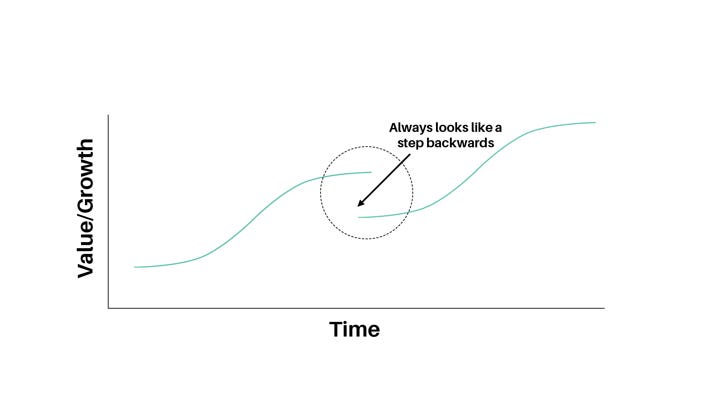
When business realise they need to jump to a new curve it is often too late. As described in the book Stall Points (by Matthew S. Olson and Derek van Bever), once a company experiences a major stall in its growth, it has less than a 10% chance of fully recovering. In order to stand a chance of survival organisations must evolve ahead of necessity to do so.
Mapping the biological evolution of a Crustacean to an S curve works very well. As it is natural for the crab to reach a point of optimal growth it simply discards that old version of itself and develops a new version.
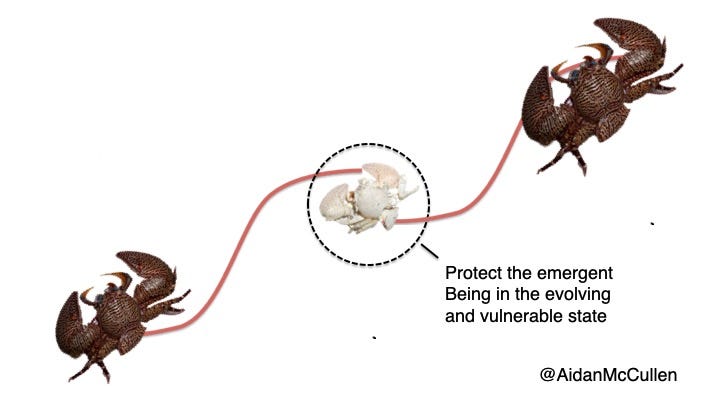
When the crab is in that intermediary state, without the hard exoskeleton, it is at its most vulnerable. This maps to the step backwards stage of the S curve (see above).
Business leaders must focus their attention on this stage in particular because the core business can often run counter to what the fledgeling business is trying to achieve. Because the emerging business (the shell-less crab) is vulnerable, it often falls prey to the predators. In a business sense, predators are the established business leaders, those people who are practising “Good Management” and avoiding anything that pulls the established business off-course. Leadership must, therefore, protect and nurture the fledgeling business, provide a safe place to nurture those ideas (and those people, who often suffer ostracisation and vilification.)
This is the classic innovator’s dilemma, the established business shell is built for organisational excellence and consistency and therein lies the problem. Any deviation from consistency appears to be a distraction. In many organisations he shell-less crab gets very little energy, protection, budget or runway, in fact, many evolutionary attempts are stillborn and never see the light of day.
Shedding the Old Self
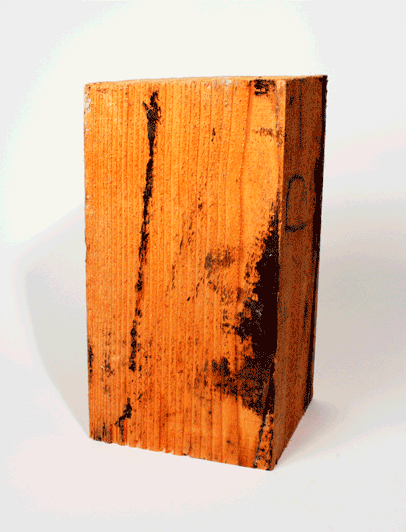
Focusing on you for a moment. Think of those times when you decided to take a bold step in your life or your career. These are the times you may decide to develop a new habit, cut your hair, take up a new hobby, change college course or change careers altogether. When you do this you are doing what is natur-al, we are designed to evolve, to progress, to change. In order to do this, we must cast off old versions of ourselves. But! What happens when you do?
Most likely, you get stricken by fear of What if, which our guest on this week’s innovation show Hilary Gallo discusses at length (It was also Hilary who inspired me to write this piece about crustaceans). The next thing that happens is very hurtful but very natural. The people who you think you can count on to support your evolution often try to hold you back, they discourage you. Why? This is because your decision for action and change can reflect on their indecision, their inaction. By you evolving, some of those closest to you will feel it exposes them for not evolving and instead of giving you a boost, they hold you down. Change is one of the hardest things for us to do.
Just like the emergent business needs protection from business leaders, the emergent self needs support from like-minded people. We need to surround ourselves with people who see beyond our shell, they see the emergent self, the bulging potential waiting to burst out. We need to surround ourselves with those people who see us for our emergent self and encourage us to let go of the old and become the new.
When we cling to the old familiar shell it gets itchy, it grates and irritates us. If we don’t shed that shell, that shell becomes our prison. It imprisons not only our essence, but it also imprisons our potential. We don’t have time for that.
“Death twitches my ear. Live, he says, I am coming.” — Virgil
Innovation Show 165 is Fear Hack with Hilary Gallo.
For the past few years todays guest has been talking to people about what scares them and helping them to work through their fears.
His book brings together what he has found. Maybe it is about time that we looked at fear differently and asked why it is still such a problem for us.
Hacking fear involves looking at fear from another angle.
Rather than being afraid of our fears, our guest shows us a way of befriending our fears. our fears. Hilary shows us how.
Fear Hacking is a way of turning our experience from a monster story into a love story.
We welcome author of “Fear Hack”, Hilary Gallo
We talk:
How we develop fear
The formative years
How fear can be reframed
How we can embrace fear
How hierarchy controls us
How we can play the victim
How we justify our position
Strategies to break free
Have a listen:
Soundcloud https://lnkd.in/gBbTTuF
Spotify http://spoti.fi/2rXnAF4
iTunes https://apple.co/2gFvFbO
Tunein http://bit.ly/2rRwDad
iHeart http://bit.ly/2E4fhfl
More about Hilary here:
www.hilarygallo.com/